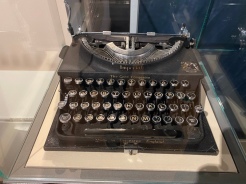
It was cold, very cold on that Friday… just five days ago.
Across the road, people were trickling out of the railway station and along the busy main road through Penrith. Three hours from now it would fill with commuters both leaving and arriving in the Cumbrian town on the main west-coast line to Glasgow.
But not yet…
“Full Circle: Finding the Way Home’ was the name of the Silent Eye’s weekend workshop. The town of Penrith its base for the three days; and the bitter Cumbrian wind was seeing it start in true local style. The land of lakes and mountains was mounting a traditional Winter welcome…
Nine of us had Penrith Castle to ourselves and I was standing by the English Heritage notice-board quite stunned by what I was looking at. The word ‘Cycles” had just taken on a quite different meaning, and I was staring at an astonishing piece of cyclic history in the cold quiet of a ruined castle.
There is very little of Penrith Castle remaining, but the surviving walls delineate a modest fortification, likely built by Ralph Neville, who, at the end of the 14th century, was England’s chief defender against the Scots. He was granted the manor of Penrith in 1396, becoming Warden of the West March. A days’ march would take his troops to the border with Scotland, that forever foe… But, the history before me had nothing to do with the Scots.

Much of the castle’s interior construction was to do with comfort – something the freezing winds brought home to us on that bitter Friday afternoon. The English Heritage illustrations clearly show that the raised interior structure of stone and wood was devoted to the provision of sheltered ‘apartments’.

(Above – a plan of the interior of Penrith Castle as it was in the 15th century. ©English Heritage and photographed from their information board)
The castle is built on a high plateau which affords commanding views of everything around; but the highest point on the hill is actually 170 metres away. It is most likely that the location was chosen because it was the site of a former Roman fort, whose existing banks and ditches could be used in its construction.
In turn, and given its commanding position, the Roman fort may well have been built on the site of a more ancient settlement – possibly a pagan temple linked with the landscape.
One of the central aspects of the weekend – beautifully envisaged by Sue and Stuart – was to examine whether the so-called Ley Lines of energy that criss-cross the Earth’s surface – and are strongly associated with places we view as sacred landscapes – could be felt. It’s easy to be fanciful with these things; much harder to let go our ordinary sensitivity to a place and genuinely feel its effects without superimposing our subjective feelings.

The castle demonstrated Ralph Neville’s powerful position over this wild part of what is now Cumbria. His son, Richard, began the improvements shown on the English Heritage schematic, but they were finished by another man, to whom the castle was granted in 1471. Richard, Duke of Gloucester (1452-85) is known to history as King Richard III…. His bones would eventually, and ignominiously, be found beneath a car park in Leicester. As Sheriff of Cumberland, Richard lived at Penrith Castle between 1471 and 1485, during which time the improvements to the castle were completed.
But, in the great cycle of history, Richard III, last of the Plantagenets, died in a place called Bosworth Field, after a battle with a Welsh upstart and his army. That upstart was named Henry; and he became King Henry VII of England – the founder of the Tudor dynasty and the father of Henry VIII.
I was standing in the home of the last ‘old king’ of England at the end of an era that had included the Wars of the Roses – a cycle that would be swept away by the energy and, often, barbarism, of the coming Tudor age. It was a vivid illustration of how our lives are governed by larger cycles, and that home can be a long way away…
Our Silent Eye Weekend had truly begun.
©Stephen Tanham.




























Reblogged this on anita dawes and jaye marie.
LikeLiked by 1 person
I usually find ruins to be peaceful reminders of what was, but this one seems to push you away… your weekend should be interesting…
LikeLiked by 1 person
Yes, Jaye – a combination of that and the truly bitter cold! But that adversity became the heart of a wonderful few days…. more to follow; and Sue and Stuart’s accounts as well. 😎
LikeLiked by 1 person
XX
LikeLike
Reblogged this on Not Tomatoes.
LikeLiked by 1 person
Thank you, Alethea. We missed you! X
LikeLiked by 1 person
Reblogged this on The Silent Eye.
LikeLiked by 1 person
Thank you, Stu.
LikeLiked by 1 person
Reblogged this on Sue Vincent's Daily Echo.
LikeLiked by 1 person
Thank you, Sue x
LikeLiked by 1 person
Sounds wonderful
LikeLiked by 1 person
We froze, Robbie… but it was great 😎
LikeLike
The castle was to the naked eye a ruin but I honestly saw it in all its glory, tapestries, paintings and rooms. All this along ghosts of even earlier times ..even dragons . My thanks to you and our two other guides.💜
LikeLiked by 1 person
That’s great, Willow. To have the personal power of creative ‘imagination and visualisation’ like that is an important part of magical development. We loved having you with us and hope you will join us again 😎
LikeLike
Thank you Steve, I hope so too.💜
LikeLiked by 1 person